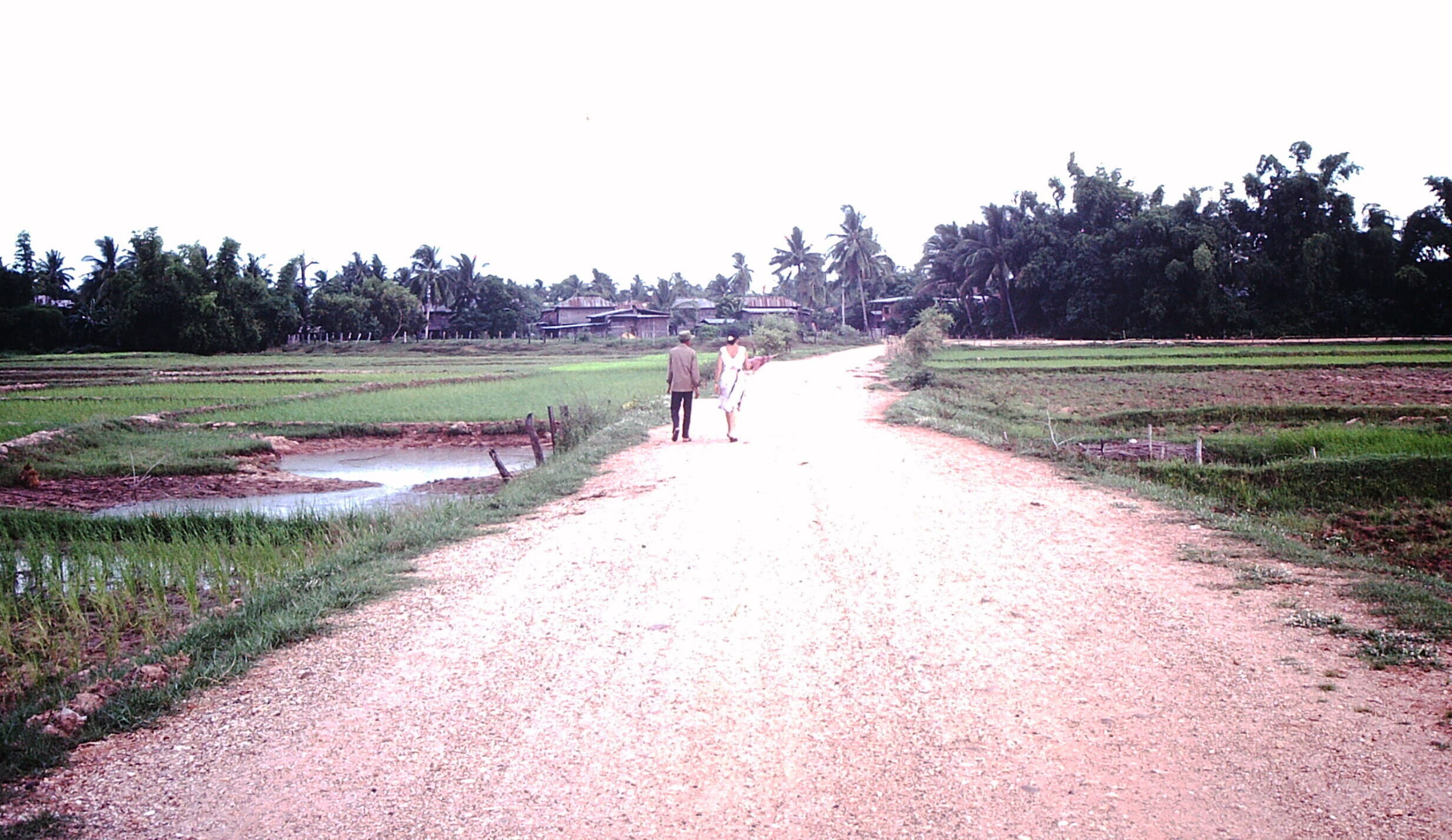
I grew up in the aftermath of World War II. Mom and Dad were traditional Republicans. Everyone assumed that, although war was tragic, it was sometimes necessary. In 1960, when I started in physics at UC Berkeley, two years of military training were mandatory for all male students, including wearing a military uniform to classes once a week. No one, including me, objected – most young Americans still assumed that war was necessary, if not glorious.
The first university rebellion in America, the Free Speech Movement, occurred at Berkeley in 1964, my last year – 750 students, demanding the right to hear a communist speaker, were arrested for sitting-in, in the administration building, Sproul Hall.[1]
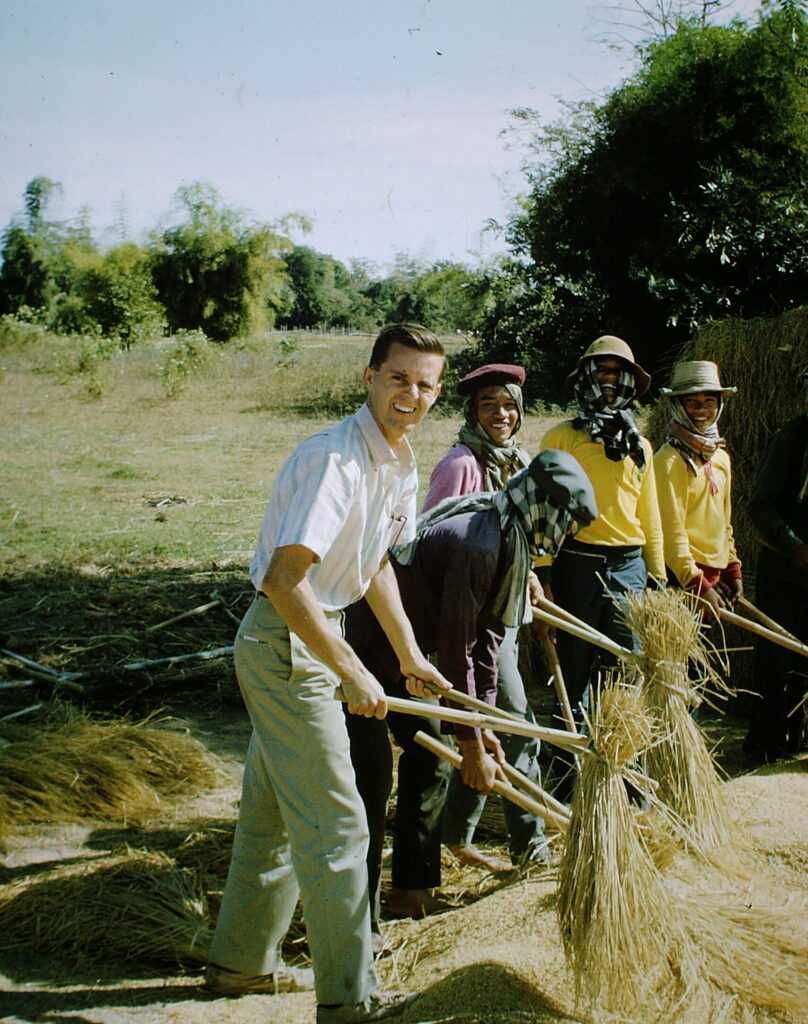
One week out of Berkeley, I had joined the Peace Corps. I was put in charge of the construction of a water treatment plant for a large village in Thailand. I worked hard in the tropical heat, humidity, and mosquitoes. I contracted both amoebic dysentery and tropical sprue, and lost 50 lb, but kept going. After a year, I met a beautiful Thai Catholic woman who thought I was poor and starving. One year later we married. By 1968, the project was almost done.
But then the money disappeared. The kamnan, the headman of the township, was in charge of the money collected from the villagers to purchase materials for the project. He was gruff, and formidable – four inches shorter than I, but 100 pounds heavier, with teeth totally black from a lifetime of chewing betel nut (a mild narcotic), and one incredible dark indigo tattoo that completely encased his body from his neck to his knees – from a distance it was impossible to tell whether or not he was wearing anything.
I was upset because this meant all my work and sickness was wasted. The villagers were upset because it was their money. A dozen of them came to me, to plead, earnestly and passionately, that I do something.
So on the next occasion when I was alone with the kamnan, I expressed my feelings, and those of the people who had come to me, without directly accusing him of taking the money. I knew I was violating the Thai taboo on criticizing one’s elders. But given the fact that I was not Thai, I thought it might work. When I finished, he sat motionless. After an awkward silence, I excused myself and left.
Several weeks later an evening meeting was scheduled. As Lacksana and I approached the village on our motor-scooter, we were waved down by a provincial officer with whom I had often talked. The meeting had just been cancelled. But then he indicated, quietly, there was something else he wanted to say, but not with other people around. We followed his jeep several miles back toward town, until he stopped along a dark section of road, so dark I could not see my hand in front of my face.
But I could hear his words. “The kamnan wants to kill you.” Instantly enraged, I said, “I will kill him first!”
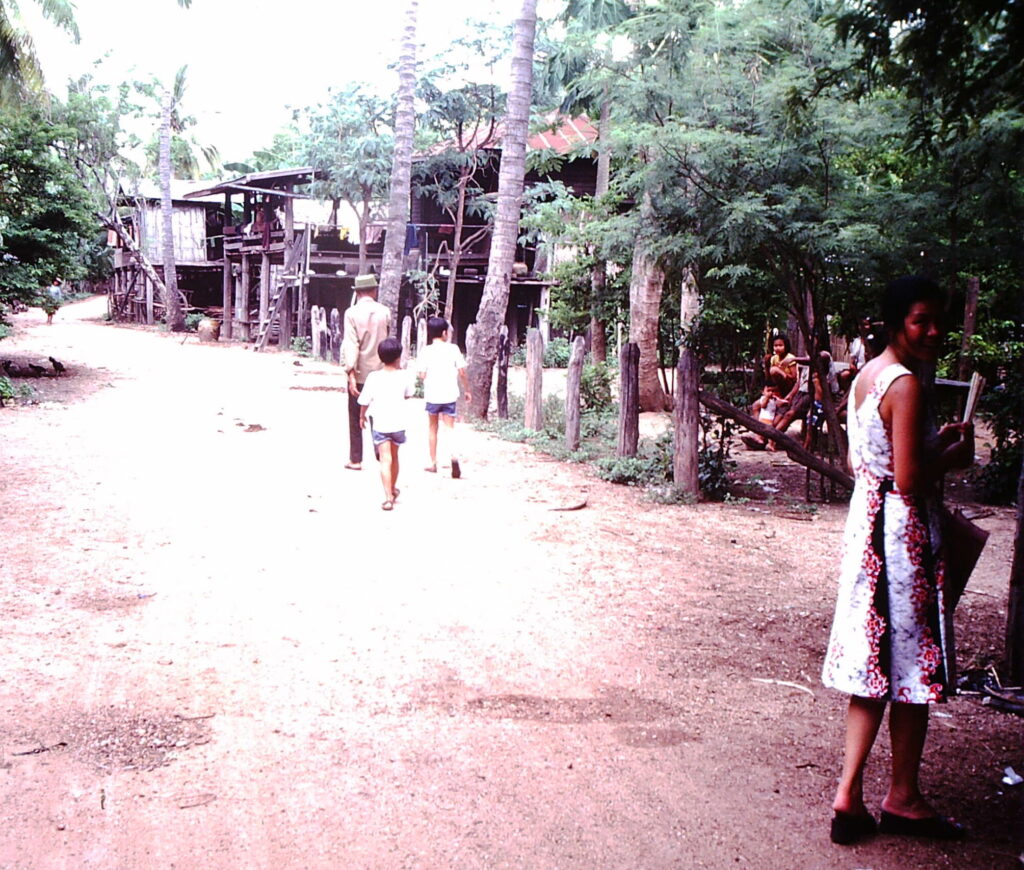
The explicit will to kill soon passed, but a deep anger remained. I found my teeth grinding involuntarily. My jaw clinched, until it ached, for days on end.
I began to fear. The smallest sounds began to awaken me at night. Our house, like most in Thailand, was built six or seven feet off the ground on stilts. I found myself holding my breath, listening with my whole body for the sound of footsteps on the stairs outside our bedroom window. Shadows on the curtains swaying in a breeze became at times a source of terror. On at least one occasion it was all I could do to choke back a scream.
After a few days I began to invent schemes to revenge myself. I would go to the village in the middle of the night with a rifle and put a bullet through his house, not to hurt anyone, but to frighten him into taking his opponents more seriously. I soon realized such an action would be too obvious. So a more devious scheme came to mind – I would go to the village in the night, but put the bullet through the house of the leader of the opposing clan.
A week later, I had a dream. I saw, from a distance, two figures walking the dirt road back into the village, unarmed. One was myself. When I realized the other was Jesus, the meaning was instantly clear. I was to carry no gun. I was to enter in broad daylight, and put my life into the hands of the man who wanted to kill me. This is the way of God. He was not guaranteeing my survival, only that, no matter what happened, he would be present with me.
To put it mildly, this dream was daunting. Because we had no money to purchase materials, the project was stalled. So I left the province for a week or two, and visited my Peace Corps supervisor. As more weeks went by and I was still alive, I felt a growing hope the kamnan had probably calmed down. When he finally collected more money from the villagers, and we could buy needed materials, I went back to the project openly. But I think I avoided the kamnan’s house for a while longer.
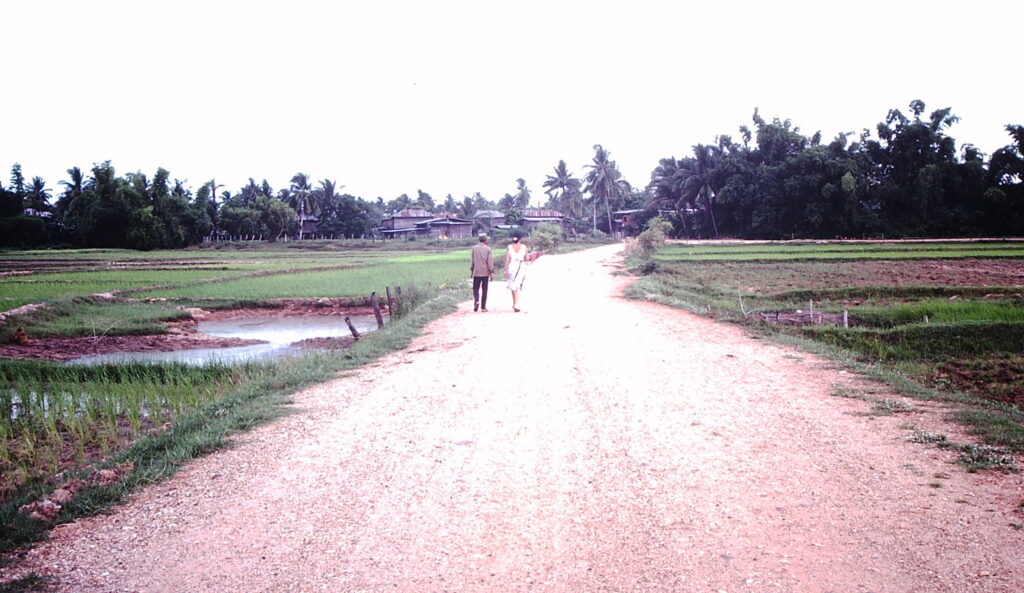
A year later, when the project was done, the water was running and my wife and I were preparing to come to America, the kamnan approached my wife and asked if she would accept one of his daughters, whom we never met, and take her with us, as a second wife for me (he himself had four wives, and recognized that first wives have the right of refusal). Lacksana did not tell me about this offer until a year or two later. Perhaps it was a peace offering.
For two years I wondered why I had never heard this dream message in church. Finally someone said, “You need to read Gandhi.” As soon as I did, I was electrified! I was not the only one. In fact, Gandhi was way ahead of me. I had a companion, and an incredible guide.
This experience changed my whole life. Jesus became more and more real to me, as I imagined him walking with me. After all these years, it is clear to me that Gandhi was sent to demonstrate and remind us that what Jesus taught actually works.
In 2003, when I told this story to my Christian Peacemaker Team (CPT)[2] training class, the founder of CPT, Gene Stoltzfus said, “You just proved Carl Jung’s theory of the collective subconscious.” Our ancestors, including my Dad’s family, were Mennonite pacifists. When they were persecuted for their faith, they remained nonviolent.
More than a thousand were burned at the stake, or drowned or hung, for their faith, by Catholics and by Protestants alike. Their tradition of nonviolence became part of their culture and their identity. My dream apparently came from that collective subconscious, even though my father never told me about their nonviolence.
In 2012, I was asked to be a driver for Jadot Said, a profoundly nonviolent Muslim scholar and mystic from Syria. In 1965 he had published the first totally nonviolent interpretation of the Koran. He and a number of his followers have been tortured by the Syrian government. Several died. But when Jadot himself was tortured, the strength of his faith and love for those who were torturing him finally won their respect. When we met, his first question was, “How did you discover nonviolence?” When I told him this story, he replied, “Allah sends such a dream to very few. You have been chosen.”
In 2015, Ajahn (Professor) Mark Tamthai mentioned that he had been sent to investigate a mass murder in Chaiyaphum province, where I had worked 50 years earlier. The kamnan of a nearby township had executed his entire committee after they accused him of corruption. Ajahn Mark found that all the kamnans in that district believe they would be justified in killing anyone who blew the whistle on them.
I realize now that my plan to fire a warning shot through my kamnan’s house would very likely have backfired: the village dogs would have howled as I approached. My kamnan may well have had a weapon, and would likely have fired back at me. That dream very probably saved my life.
Pace e bene
Lorin Peters
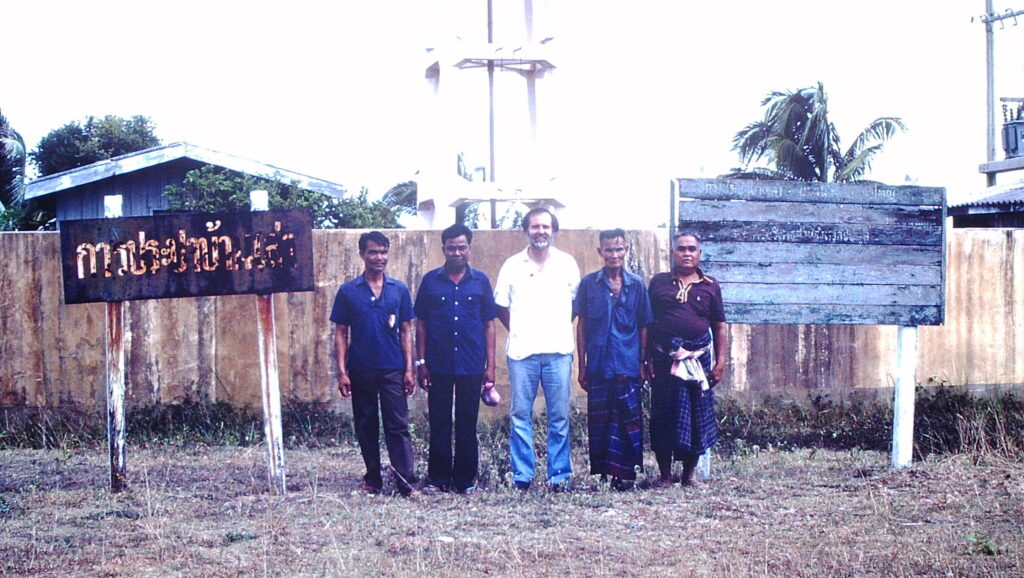
[1][1] Editor’s note: the “Free Speech” movement addressed a number of issues that came to the forefront in the 1960s. They included, 1) lack of any student representation on any governing committees, 2) lack of a student managed and edited newspaper, 3) paying students minimum wage for on-campus jobs, 5) condemning the “loyalty oath” all faculty were forced to sign, and 5) the right to on-campus peaceful protest. Some mark the beginning of the Free Speech Movement as October 1, 1964 when Jack Weinberg was arrested for distributing civil rights literature on campus.
[2] Kathleen Kern. In Harm’s Way: A History of Christian Peacemaker Teams (Eugene: OR: Cascade Books, 2009).
